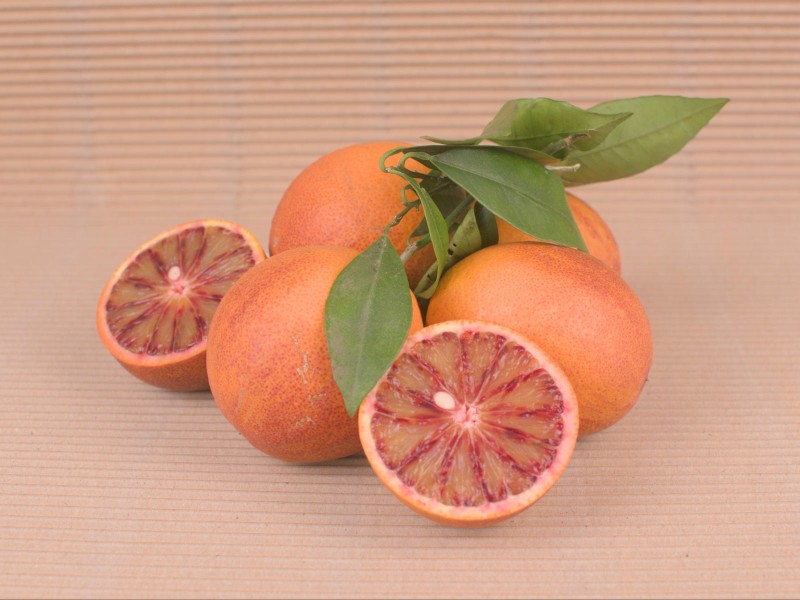Sanguinelli: Blood Orange
GENERAL DESCRIPTION:
The blood orange is a variety of orange with flesh spots of dark red color, whose juice has a color similar to
raspberry. The degree of this coloration depends mainly on strong temperature changes between day and night, as
well as the variety. The dark red color of its flesh is due to the presence of anthocyanins, which are pigments
with antioxidant properties common in many flowers and fruits although rare in citrus fruits. Although they can
be harvested from December to May, in our area the best months are February and March.
It is round, medium or small in size, smooth skin of little thickness and orange color with red spots. It is a
very juicy orange, with a higher degree of acidity than Lanelate and a delicious special flavor. It may have some
seeds. It produces a large amount of juice, although it can also be taken as a table orange. The pulp of these
oranges is strong and compact.
CALIBER:
The average caliber of this variety is medium or small. The minimum commercial caliber in Naranjas de Cullera for
this variety is 60 mm.
DURABILITY:
It is kept in good condition up to 30 days after harvest (some pieces even more), always following our instructions
for its conservation: remove them immediately from the box, spread them on a large surface, with temperature and
humidity not extreme, without direct sunlight or heat sources, and discarding any piece that may spoil. This is a
general rule, considering that they are perishable and without post-harvest treatments, it is also possible that
some piece will spoil before 30 days.
POSSIBLE INCONVENIENCES:
For those who like sweet oranges and do not tolerate acid, this is not their orange. It usually has seeds. It may
have aesthetic defects that do not affect its quality (see our blog about it). In advanced stages of ripening it may
be soft. Like all fresh oranges and without post-harvest treatments, they do not peel well with the hand.
Conventional farming
These fruits come from conventional farming, which means they may have
received conventional treatments during their production. Once harvested,
they are only cleaned with a cloth before being marketed. No waxes, fungicides,
or other preservatives are added to them. The treatments applied by
our farmers exclusively use products authorized by the EU. Nevertheless, a
significant portion of the fruits we serve comes from orchards that have
not received any pesticide treatments.
